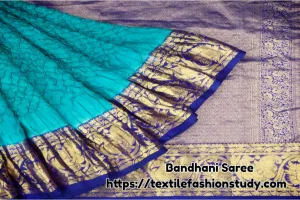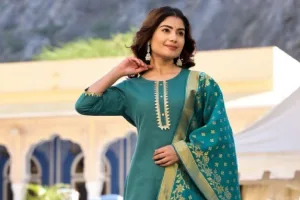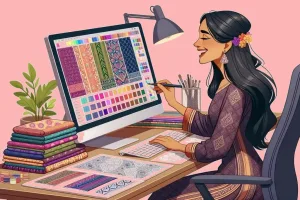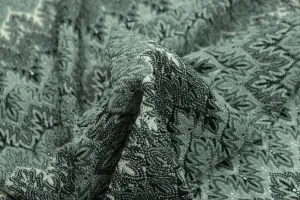Trims
Trims are components added to clothing or ensembles to improve their aesthetic appeal. In essence, garment trims are all the extra components that are attached to a garment after the body has been created. They employed clothing and apparel to offer aesthetically pleasing appeal, practical convenience, or a combination of both. There are different types of trims might include items like buttons, zippers, ribbons, or lace.
Trims are a complex and frequently disregarded component in the fabrication of every article of clothing in the dynamic world of the apparel business. They are much more than simple embellishments; they provide a substantial contribution to the garment’s overall quality, visual appeal, and practicality. These minute details, which range from lace and ribbons to buttons and zippers, are essential to the design and fabrication processes. This paper will delve deeply into the topic of trims, examining their significance, the numerous kinds, the ways in which they are used, and the current fashions that are influencing their use in the clothing business.
Table of Contents

Roles of Trims in the Garment Industry
In the process of making clothing, trims and accessories are extremely important. Clothing without trimmings is unthinkable. The clothing is made wearable and appropriate for consumers by the considerable application of trimmings. For the production of clothing, trims are essential. Because they are essential to a designer’s creative process, trims have a crucial place in the fashion world. They influence the aesthetic and practical properties of a garment by adding subtle finishing touches to an ensemble. It’s interesting to note that trimmings can influence a garment’s drape and silhouette by dictating how it interacts with the body.
A designer’s toolkit is not complete without trims because they frequently experiment with different sorts to give their creations a unique character. Particularly in high fashion, trims are carefully chosen to match the overarching clothing motif. They reflect the designer’s thought process and creative objectives and encapsulate the brand’s philosophy. Trims are also highly relevant in terms of sustainability. In line with the fashion industry’s push to reduce its environmental impact, trims produced from organic or recycled materials have gained popularity. They’ve come to represent environmentally conscious fashion statements.
Without a doubt, trims go beyond being simply accessories. They form a key component of a garment, creating the ideal fusion of form and function.
Why Trims Are Used
You may ask why trims are used in the garment industry. The following are the reasons for using trims: They are-
- The first reason trims are utilized in the clothing business is to give outfits character and variety.
- Second, they aid in setting one brand apart from another, providing a competitive edge.
- Thirdly, a distinctive trim that improves the aesthetics of a garment can increase its appeal to customers and result in better sales.
- Trims can therefore turn an ordinary item of clothing into a stylish outfit. A simple denim jacket, for instance, can be transformed into a high-fashion piece by adding stylish buttons or elaborate embroidery.
- Last but not least, trimmings can transform clothing from plain to opulent.
Types of Trims used in Garment Industry
Different types of trims are used in the garment industry. They are-
Functional Trims
Functional trimmings are those that help the fabric function properly, such as buttons or zippers, and serve a useful role in the garment. They give the wearer the option to open, close, or alter specific areas of their clothing for improved fit or comfort.
Decorative Trims
Trims with ornamental elements are used to accentuate the beauty of fabrics or garments. The only function of decorative trims, on the other hand, is to make the clothing look more attractive. Sequins, pearls, beads, and needlework are a few of the components they have.
Now, I’d like to describe the different types of trim used for making garments. They are-
Sewing Thread
It is most important types of trims. Garments cannot be sewn without a sewing thread, so in every garment industry, it is by far the most crucial component. However, sewing thread greatly influences the aesthetic and longevity of the finished item, despite the fact that it normally only represents a small fraction of the cost of clothes. After that, to create sewing thread, both natural and artificial fibers can be used. There are different forms of sewing thread, such as synthetic threads, threads made from natural fibers, filaments, spun, and core-spun threads.

Buttons
In clothes, buttons, which are typically disc- or cylinder-shaped attachments, perform both practical and decorative duties. It is a another types of trims. Buttons are fastened to garments using pre-drilled holes and are typically made of plastic, metal, wood, or seashells. They enhance the overall visual attractiveness of the clothing because they are available in an astounding range of styles, dimensions, and color schemes. Buttons may add charm and refinement to a garment, demonstrating their crucial significance in fashion design, whether they are functionally necessary or aesthetically pleasing.
Zippers
Zipper is a types of trims. In garments, purses, and other textile products, zippers are a common fastening mechanism. The slider glides along the teeth to open or close the two borders of the garment. They are made of two fabric strips with interlocking metal or plastic teeth. The effectiveness, use, and durability of zippers are highly regarded. They come in many different varieties, such as coil zippers, invisible zippers, and metal zippers, and each adds a special look to the clothing.
Rivets
Another types of trims is rivet. A “washer” or “disc” is pressed or hammered onto a metal stud that extends through the cloth to make a rivet. When denim or jeans were first created, Rivets transported us back in time. They are placed on the areas of the jeans that are most vulnerable to tearing due to pressure or movement and function to keep the fabric together, increasing the life of the item.

Lace
Lace is a types of trims.Lace is a delicate fabric that is formed of yarn or thread in the shape of an open web and is frequently used to accentuate clothing. It is made by weaving elaborate designs using looped, braided, or twisted threads. Lace is praised for its elegance and femininity and is used in everything from bridal gowns to lingerie. Lace frequently has intricate patterns with flowers, leaves, or geometric shapes that draw attention to the sections of the garment where it is applied.
Interlining
In clothing, interlining is positioned between two fabric layers. In essence, it is positioned between the liner and the shell fabric. They could be sewed into the clothing or fused to it. They primarily serve to support, reinforce, and maintain the shape of certain clothing components such collars, cuffs, waistbands, facings, and coat lappets. Fusible interlinings perform better than sewn interlinings. Products made of woven and non-woven materials are both permitted.
Lining
Linings on the interior of the garment provide comfort and security. Linings come in knitted and woven forms made of polyester, poly-amide, acetate, or viscose for applications where ornamentation and a warm handle are required. A typical, straightforward sewing machine is used to stitch the linings to the main garment.
Hook and loop Fastener
Another types of trims is hook and loop fastner. Two woven polyamide tapes are used in its construction, and they can be pulled apart and pressed together to form a tight seal. One tape has incredibly tiny hooks all over it, and the other has incredibly tiny loops all over it. Only a few clothing items, like shoes, belts, sportswear, kids’ clothes, medical textiles, etc., employ this product.
Ribbons
Ribbons, frequently composed of silk, velvet, cotton, or polyester, are used in the design of clothing for a variety of decorative functions. They are available in a variety of hues, designs, and widths and can be tied into bows, used to cinch hems, or even used as straps. Ribbons can be used in clothes as drawstrings, which is a practical application. Ribbons give clothing an attractive ornamental touch and frequently give clothing a softer, more feminine appearance.
Hook and Eye Fastening
It has two parts: one has an outwardly projecting, little blunt hook, and the other has an outwardly projecting eye. The proper pieces of cloth are stitched to both pieces. The hook is put into the loop to fasten the garment. Hook-and-eye closures are sturdy enough to resist the stresses involved in daily usage and are typically used in groups. Hook-and-eye closures are widely used in corsets.
Grommet or Eyelet
It uses heavier-duty materials and is larger in size. To close off the opening for a drawstring casing, eyelets are usually employed. An eyelet can lend a polished appearance, but a buttonhole will achieve the same result. It must be trimmed for hoodies.
Labels
Labels are yet another crucial finishing touch for the clothing industry. To help customers be aware of what they are wearing, a label with important information about the product is either sewn on or printed on it. The buyer’s name, the nation of origin, the fabric and yarn kinds, the fabric composition, the size of the garment, any specific care recommendations, and other information are all included on a label.
Motif
A motif is a more minor element of a textile artist’s much larger work. It is a recurrent idea, concept, or design. They are normally all the same size in a single work, however, it is possible for them to be of any size. You can affix the company name, a trademark, or other symbols to the theme.
Shoulder Pads
A common element is shoulder pads. The shoulder pad’s top and bottom are lined. The attractiveness, comfort, and duration of the appearance consequently improve.
Snap Fastener
Instead of using buttons to fasten clothing, people often use snap fasteners, which are two interlocking discs. They are also known as poppers, snaps, or press studs.
Hasps and Slider
The shoulder strap can be lengthened by sliding a metal fastening device called a hasp and slider. The slider connects the hasp to a button that is affixed to the overalls’ bib. Infant clothes is where it is most frequently utilized.
Beads
A little piece of plastic or some comparable substance that is typically spherical and perforated so that it can be weaved into a necklace or sewed to fabric. The shapes that they can take include drum, round, bicone, drop, rondelle, briolette, and cubic. Plastic beads that have holes for sewing are used in machine embroidery.
Sequins
In general, sequins are tiny, sparkly discs that are frequently sewed onto garments as ornaments. They come in a wide range of colors and geometrical shapes, and when light shines on them, the sequins shimmer, highlighting the outfit. Due to their glossy allure, sequins are frequently utilized in costumes, swanky clothing, and accessories.
Patches
Patches are pieces of fabric that can be used to decorate clothing or to fix a hole or worn area. They add a distinctive touch to the outfit and are available in a variety of forms, sizes, and styles. To personalize and distinguish the outfit, patches may bear logos, figures, or slogans.
Tassels
Tassels are decorative elements made up of a collection of unbound, loose threads or cords that hang freely at the other end. To add a refined appearance, they are frequently sewn along the edge of a garment like a scarf or shawl. Although any material can be used to make tassels, thread, silk, or yarn are the most common choices.
Embroidery
The craft of embroidery involves using a needle and thread to decorate fabric. This kind of trim can give a garment more dimension, color, and texture. Designs can be straightforward or intricate, and they are frequently influenced by history, culture, or current fashion trends. A handcrafted and opulent aesthetic is frequently expressed by the intricacy and distinctive attractiveness of embroidered clothing. Each form of trim has distinguishing qualities all its own, fulfilling a particular function and adding a touch of elegance to a variety of clothing items. The design, the intended style of the garment, and the designer’s creative freedom all play a role in the selection and use of these trimmings.
Rhinestones
Rock crystals from the Rhine were originally used to make rhinestones, which are now available in a variety of designs, such as glue-on flat back rhinestones, sew-on rhinestones, and flat-back hot-fix rhinestones. Rhinestones are frequently utilized as a trim to produce fashionable items for babies or women.
Drawstring
It refers to any retractable string, ribbon, or tape that has two slack ends and is either snugly or loosely able to wrap around objects. Drawstrings are pulled together in order to alter the size of the garment opening.
Feathers
They are unique trims that were cut from different birds and sewed into their clothes and headgear. As a result of this tendency, the economy gained enormously, but the bird community suffered greatly; numerous species came perilously close to extinction. Synthetic feathers are more frequently used on dresses these days than on hats as a trim.
Fur
It has a different types of trims. It is cozy, chic, and breathtakingly beautiful. Fur is frequently used by costume designers, such as Duru Olowu, Proenza Schouler, and Alberta Ferretti, to distinguish their works from their competitors.
Fringe
Any garment can have a simple trim called fringe attached to it to give it a beautiful appearance. It is a textile border that is sewed onto the edge of a textile product, such as epaulettes, draperies, or a flag.
Application and Functionality of Trims
There are huge applications for trims in the apparel or clothing industry. The diverse use of trims makes the garment more attractive to the consumer. The following describes the application and functionality areas of trims in the garment industry. They are-
Beyond the Aesthetic Appeal: Garment Trims
Trims refer to a variety of embellishments sewn onto clothing to enhance functionality or elevate design features in the realm of the apparel business. These elements contribute to the garment’s wear ability, elasticity, and overall longevity, in addition to its ornamental qualities.
Consider buttons. These common clothing fasteners, which are typically made of hard materials like wood, metal, or shell, do more than just hold clothes together. In addition to serving a functional purpose, buttons also serve as decorative embellishments on clothing. Each button is a miniature piece of art thanks to its distinctive designs or minutely crafted details.
The method of securing clothing with zippers is more modern. Since they were invented in the 19th century, zippers have made it quick and easy to open and close clothing, making them the preferred option for many different products like coats, pants, and dresses. They come in a wide variety of kinds, including metallic, plastic-molded, and coil zippers, each with unique characteristics to meet particular garment requirements.
Embellishing with Ribbon and Lace
Lace and ribbons are popular options for more aesthetically pleasing trimmings. Due to the great range of materials, patterns, and colors used in both, there are countless options for ornamentation. Despite being frequently linked with femininity, lace and ribbons can be found on a variety of clothing items, adding a refined touch or a splash of color.
Drawstring and elastic fit customization
Adjustability is greatly influenced by elastic and drawstrings. These trimmings, which are frequently found on waistbands and cuffs, enable clothes to suit a variety of body proportions without precise tailoring. Since there are many different colors, materials, and finishes to choose from, they are not only practical but may also be included in the overall design of an article of clothing.
Patches and reinforcements to Increase Durability
Patches and reinforcing trims improve a garment’s durability, especially in high-wear or stress regions. The corners of pockets, the elbows of jackets, or the knees of children’s pants may all have them. Beyond their usefulness, these trimmings can add to a garment’s style by adding patches of contrasting fabric or boosting the tough look of a pair of jeans.
Every trim counts in the clothing industry. These components, whether they be reinforcement, patches, or simple buttons, are essential to a garment’s functionality and appearance. They provide wearers with joy and operate as the frequently underestimated pillars of the fashion industry through smart design and useful application.
Latest Trends in Trims
Sustainable Trims
The rising usage of sustainable trimmings is at the forefront of a new trend towards eco-conscious methods in the apparel industry. Many designers are actively working to lower their carbon footprints as society grows increasingly cognizant of how our actions affect the environment. This entails obtaining environmentally friendly trims made from recycled materials like plastic, bamboo, wood, or even recovered ocean debris. In addition to reducing the environmental impact of fashion production, these eco-friendly trims also offer a distinctive, natural appearance that appeals to a variety of consumers. Leading companies like Patagonia and Eileen Fisher are paving the way in this direction with their clothing by using recycled materials and other environmentally friendly production techniques.
Trends in the industry and the trim
Since the fashion business is dynamic, modifications to production processes or raw materials may have a big impact on the kind and application of trims. For instance, designers can now work with a broader variety of trims, including those with intricate patterns and designs, thanks to the industry’s transition toward digital printing techniques. Similar to faux fur, faux leather, and other synthetic trims are in high demand due to the increased interest in vegan and cruelty-free clothing.
Different Trim Designs
Unique, ornately crafted trims have become more popular in recent years in the world of fashion. Trims are becoming less of an afterthought and more of a feature as designers and fashion firms push the bounds of creativity. This involves the use of 3D-printed trimmings, which enable form, size, and texture modification. Heavy beading, feather trims, and exquisite lace accents are some more themes. This trend has been mostly driven by designers like Alexander McQueen and Balmain, whose most recent collections made trims the center of attention.

Top designers’ and fashion houses’ influence
Trim trends are greatly influenced by renowned designers and fashion houses. Top industry players’ trim choices can eventually filter down to high-street retail markets for their collections. Using it extensively by designers like Marc Jacobs and Proenza Schouler, fringe trim, a classic example, has made a resurgence. The industry has also seen an explosion of ruffle trims this season, thanks in part to designers like Valentino and Givenchy.
Trim Trends: Global Influences
Global influences also have an impact on trim patterns. For instance, ethnic Indian designs sometimes have mirror-work trims, which are now well-liked all around the world for their distinctive appearance. In particular, strong, statement trims that give any garment a vivid, colorful appearance are where African patterns are making their mark.
Technology and smart trimmings
Another new trend is the inclusion of technology in trim. Fashion firms have been able to elevate the usefulness of clothing to entirely new heights because of this ground-breaking strategy. These smart trims include magnetic zippers for simple closure and thermochromic buttons that change color with temperature. Incorporating these clever trims into their products has proven to be very successful for athleisure designers in particular, resulting in clothing that is not only stylish but also very functional.
In general, the trimmings industry is always changing and thriving thanks to inventive production methods and creative designers.
In conclusion, the seemingly unremarkable characteristics of clothes, such as buttons, zippers, and laces, play a vital role in the functional and aesthetic worth of our clothing. The use of trims in the ever-evolving world of fashion is still evolving, shaped, and inspired by current trends. The world of trims is as varied and active as the industry it serves, whether through sustainable sources, original design, or skilled craftsmanship. The subtle skill of trimming used in the clothing business must be recognized and appreciated in order to completely comprehend the world of fashion.
Finally, trims are essential materials for making garments. So, it is necessary to know about the different types of trims used in the garment industry.





